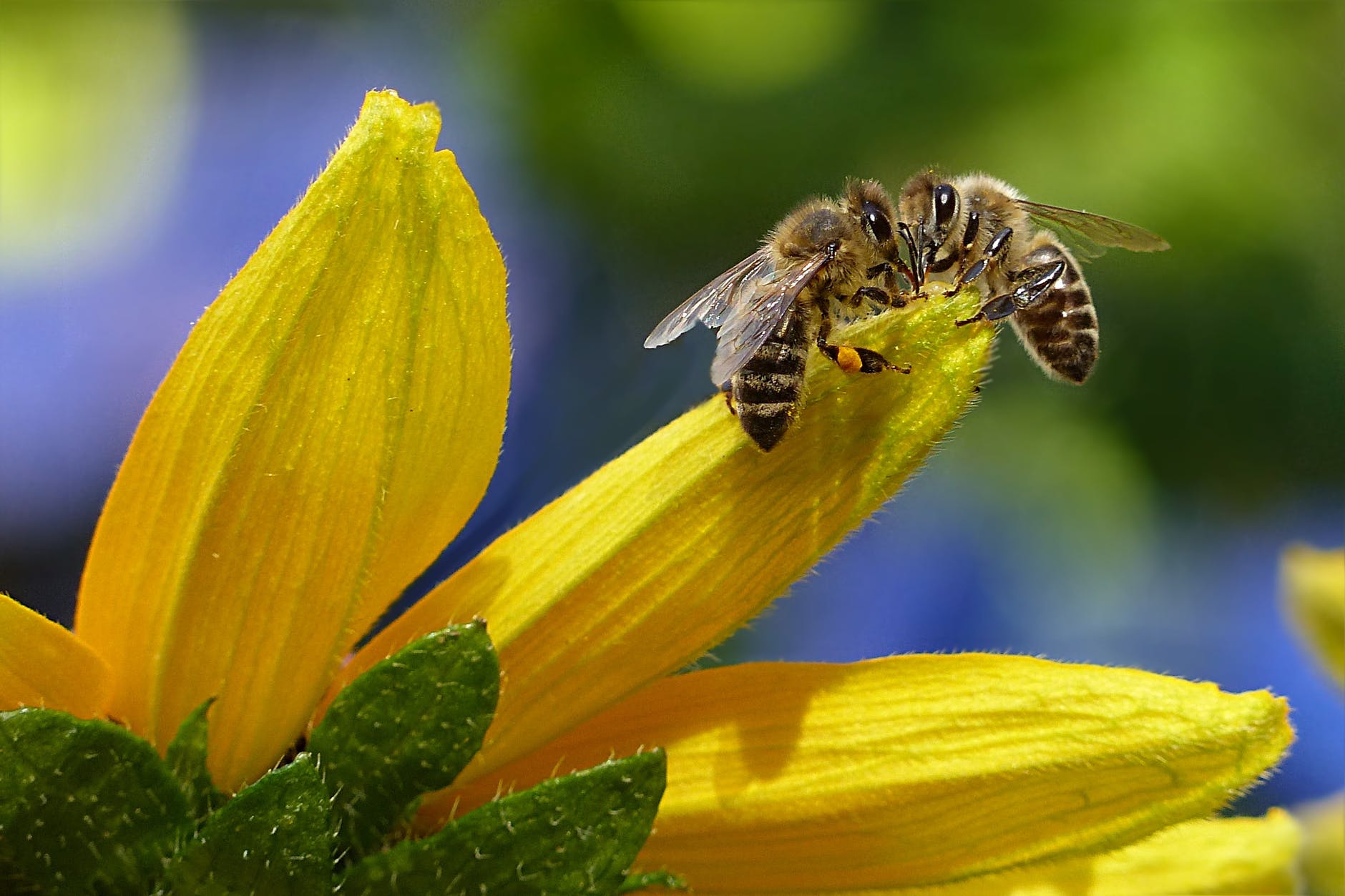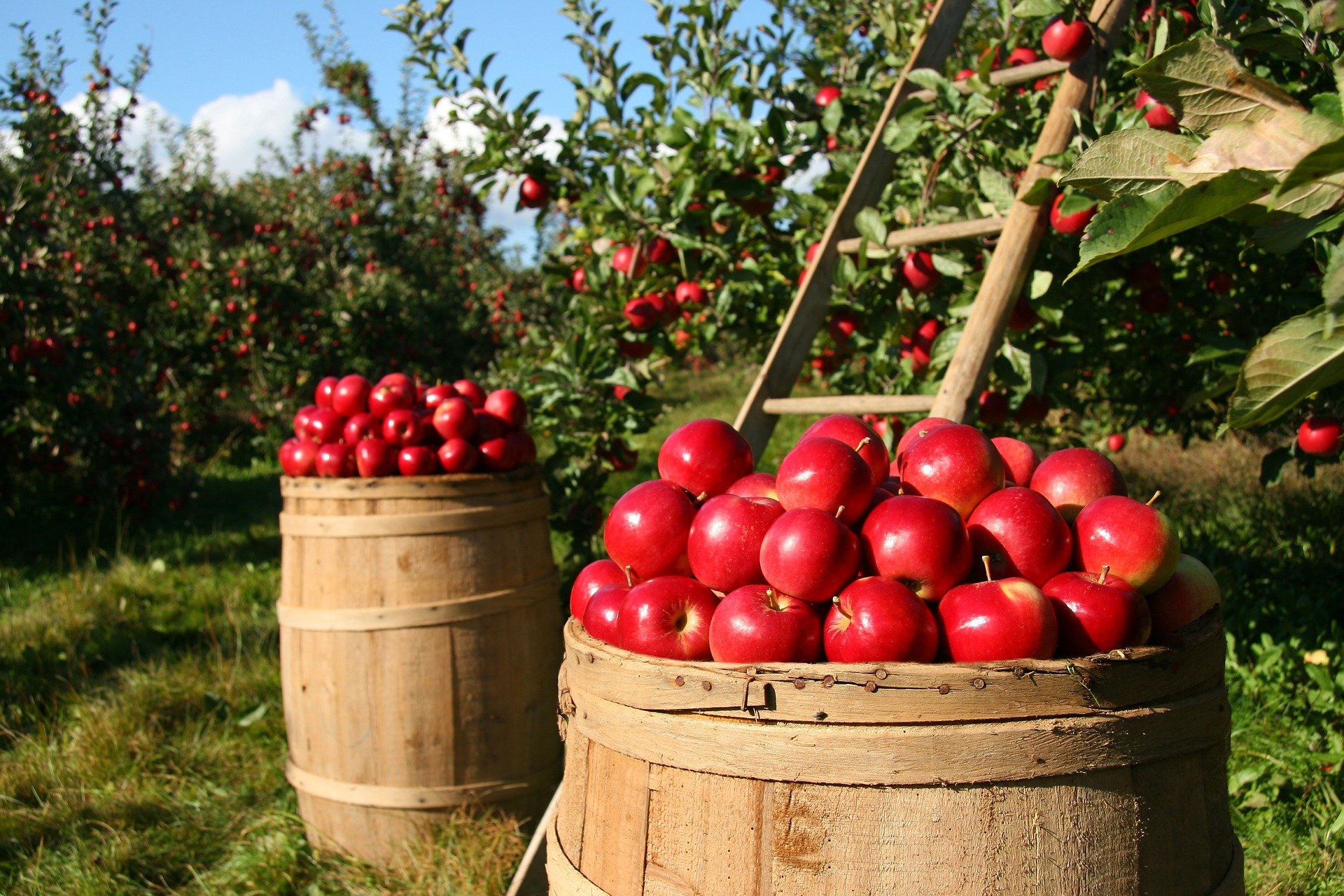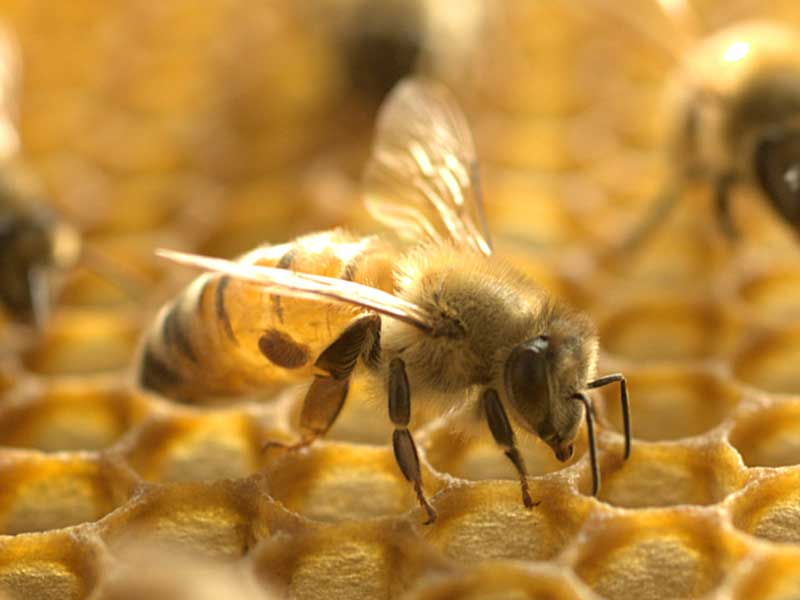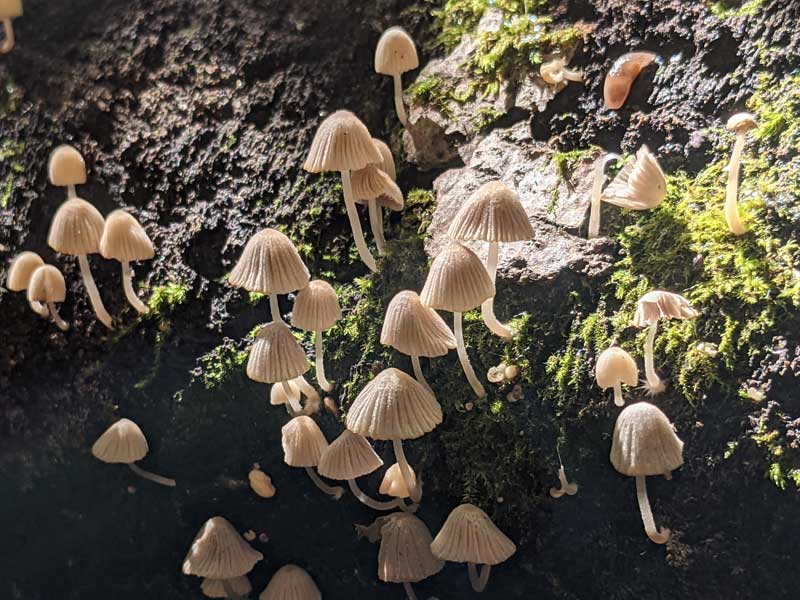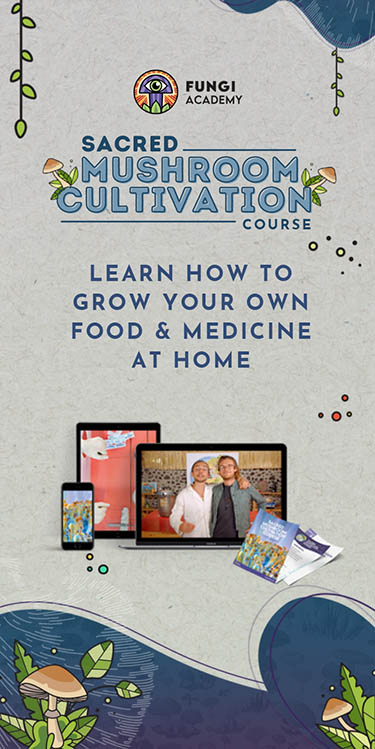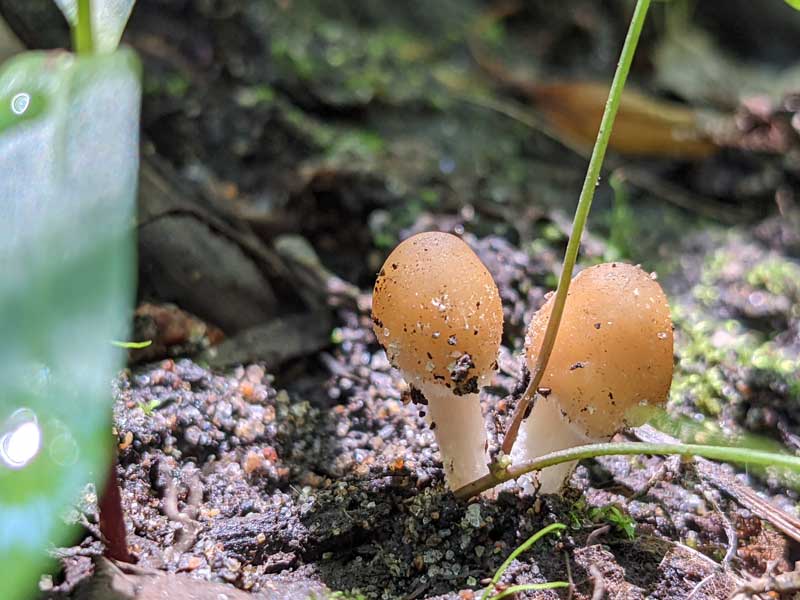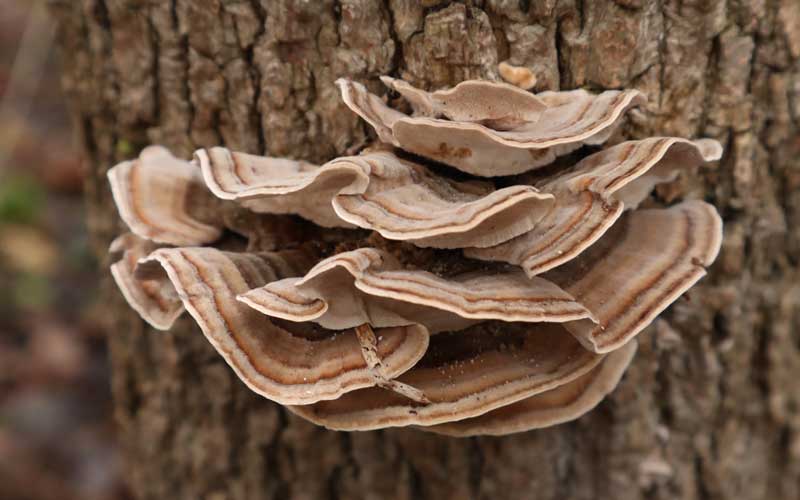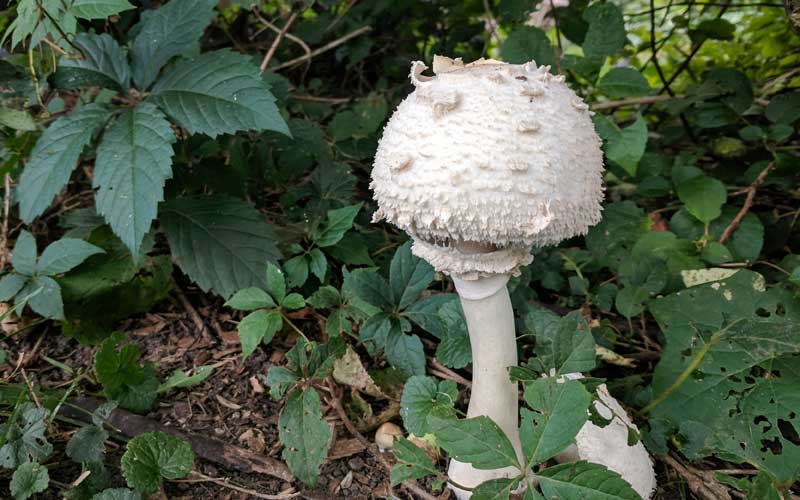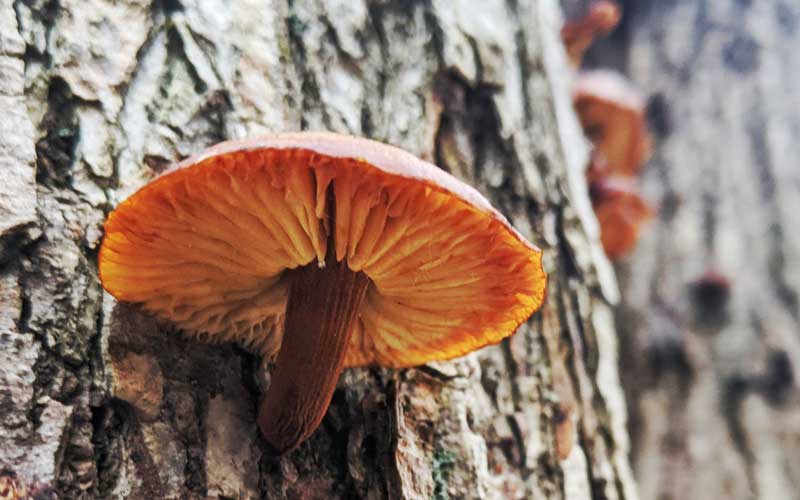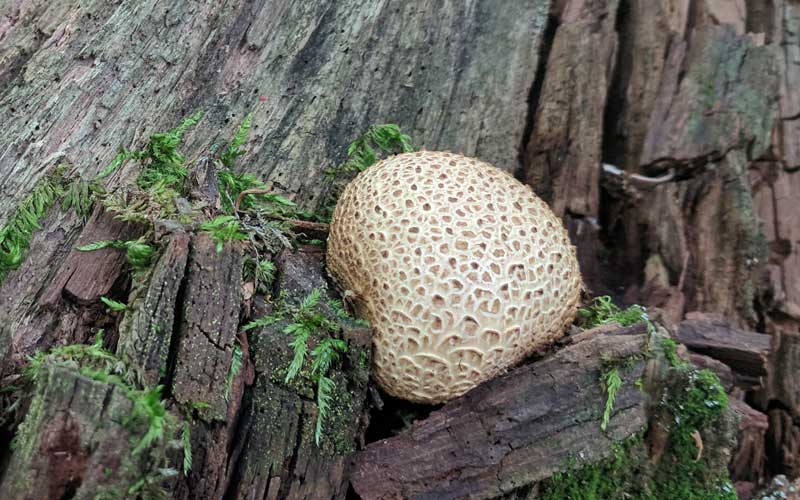- Home
- Mycelium Intro
- Honey Bees
Fungi to the rescue – successfully treating mite infestations in honey bees.
Entomologists have discovered fungal treatments for the deadly infections plaguing honey bee colonies.
The Western honey bee (Apis mellifera) is critically important to food production around the world. In the US alone, it’s estimated that bee populations (both wild and managed) contribute $50 billion to the annual economy through crop pollination – including fruits, nuts, and vegetables.
Globally, bees’ agricultural net worth is $238 billion each year.
Members of the Apis genus play an essential role in maintaining healthy plant communities in North America, Europe, Asia, and Africa. Which is why steep declines in honey bee populations over the past fifteen years have scientists very worried.
One in every third bite of food we eat is the result of pollinators. If honey bees are endangered, human’s food security is threatened as well. Imagine a world without apples, pears, peaches, almonds, cashews, avocadoes, berries, melons, peppers, cucumbers, tomatoes, garlic, and onions!
In addition to honey, bees pollinate over 130 fruits and vegetables and are responsible for pollinating three-fourths of the world’s flowering plants – including crops like alfalfa and clover, that livestock and wild animals feed upon. If we lose honey bees, the ripple effect is chilling.
The mystery of disappearing bees.
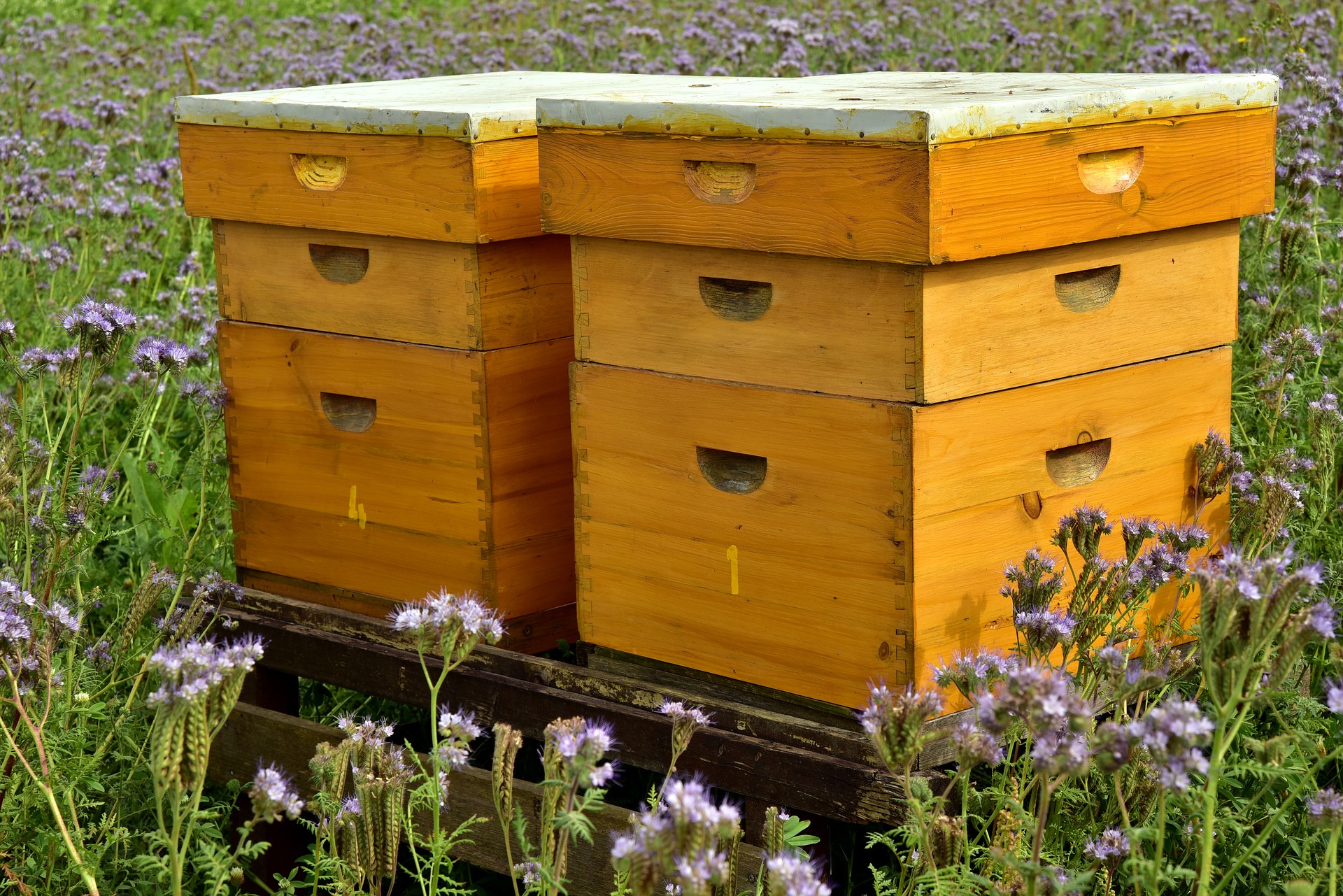 Photo: Pixabay
Photo: PixabayIn 2006-2007, beekeepers across the U.S. and Europe began to report high mortality events, losing 30–90% of their hives in a single season.
Despite plentiful honey stores and pollen reserves, hives began to suffer sudden losses of their worker bees. The queen bees were not as affected, nor the immature brood inside. But without worker bees, a hive cannot survive and will die over winter.
Scientists didn’t understand what was causing the devastating collapses. As many as 50% of affected colonies showed symptoms inconsistent with any known cause of honey bee deaths. When most (or all) bees in a hive perish, it’s typically called a “beekill incident” – attributed to acute poisoning.
Common signs of pesticide poisoning are piles of dead bees right outside the hive entrance. Heavily diseased colonies also display high body counts. But in mysterious colony collapses, worker bees in otherwise healthy hives simply disappear without a trace.
Scientists at the EPA eventually defined this syndrome as Colony Collapse Disorder (CCD), and spent years searching for its cause.
CCD is a phenomenon that occurs when a majority of worker bees in a colony suddenly disappear, leaving behind a queen with no workers, and only a few nurse bees to care for her and the remaining immature brood bees.
Colony Collapse remains a long-term threat to honey bees. Reported cases have held steady since 2006, with an average of nearly 30% of all US hives dying each winter. Today, beekeepers continue to report annual losses between 30-50% of their hives each season.
A race to save the bees.
By 2010, scientific consensus pointed to multiple stressors making honey bees highly susceptible to CCD.
These include:
- Long-term pesticide exposure
- Habitat loss & lack of flowering plants
- Poor nutrition from fewer flowers
- Environmental stress during regional transportation of bee stock
- New diseases & viruses
- Invasive Varroa mite infestations
- Combined Immune-suppressing stress
German scientists discovered the common denominator in all affected colonies was Varroa mites – parasites which inflict significant pressure on honey bees already under duress.
Food stress, parasites, and constant agrochemical exposure are believed to impair bees’ immune systems, limiting their natural detoxification mechanisms and making them more susceptible to infections.
In 2015, Rutgers University documented widespread faltering crop yields across the US and British Columbia, directly correlated to declining pollinators. Scientists predicted an impending pollination crisis if bees continued to decline.
In the last five years, research has focused on finding nontoxic methods of treating infections with biological pesticides.
Biopesticides are ideal because they have low toxicity, decompose quickly, pose little environmental threat, and are capable of highly targeted applications.
One of the most dangerous virus strains threatening bees is Deformed Wing Virus (DWV) – an infection causing shriveled deformed wings, shortened lifespan, impaired flight, and reduced foraging ability. DWV also acts as an immunosuppressant, transmitted by parasites and pollen transfer.
Tapping into the the healing power of fungi.
Fungi produce a wide variety of natural chemical compounds with antimicrobial effect. These compounds inhibit bacteria, viruses, and other fungi. Mycelium treatments are biopesticides derived from naturally-occurring microbes in fungi.
In 2018, renowned fungal expert Paul Stamets, and entomologists from Washington State University, published promising results on the use of mushroom mycelia to reduce virus loads in honey bees.
After documenting bees foraging on outdoor mushroom beds, researchers wondered if the bees might be self-medicating for nutritional gain.
To test this theory, they fed caged bees two mycelia extracts delivered via sugar water. The oral supplements dramatically reduced viral infections of DWV and other common viruses. And bees gained noticeable health benefits from the antimicrobial compounds.
WSU researchers next began to test fungal extracts on Varroa mites, which have developed resistance to chemical miticides in recent years.
Varroa mites are tiny parasites that live on honey bee bodies and suck their blood – puncturing them with sharp fangs and consuming internal tissues. Parasitic feeding weakens bees’ immune systems, making them even more prone to infections and pesticides.
WSU researchers tested extracts from carefully selected antiviral fungi spores. Early laboratory tests confirmed that mycelia were moderately effective against mites in a clinical setting (on caged bees). But in the field, mycelia were intolerant of the warm conditions inside hives (35˚C / 95˚F), where internal heat quickly killed fungi spores.
However, heat is beneficial to mites, spending most of their life cycle inside closed brood cells of developing pupae.
Metarhizium fungus saves the day.
One intrepid entomologist wouldn’t give up. Jennifer Han, a post-doctoral researcher at WSU, led a breeding program that studied 27,000 mites over two years, to identify two Metarhizium strains that could kill Varroa.
Her team found Metarhizium brunneum and M. anisopliae most effective against mites – then genetically modified them to be heat tolerant.
Metarhizium is a mold. When spores land on a Varroa mite, they germinate, drill into its body, then proliferate – killing from the inside out. Bees have natural immunity against the spores, so it’s completely safe.
Clinical results of modified Metarhizium proved successful in 30 test hives. In May 2021, WSU and Stamets issued a press release on their groundbreaking work – M. brunneum 52 could survive warm hive conditions and is just as effective as synthetic pesticides.
New hope for honey bees...
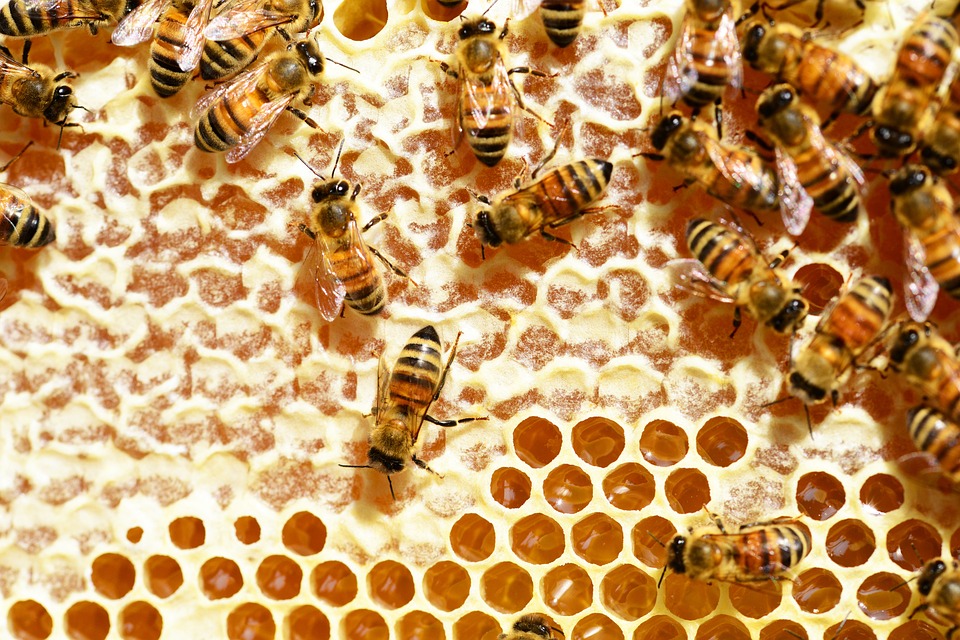 Photo: Pixabay
Photo: PixabayThe WSU team donated a specimen of M. brunneum JH1078 to USDA’s Agricultural Research Service Culture Collection, hoping to develop commercial applications in the next decade.
Once JH1078 is approved by the EPA, scientists can replace toxic pesticides altogether – Giving beekeepers an earth-friendly alternative against viral and parasitic infections. And safeguarding our global food supply through the evolutionary power of fungi.
That's great news for honey bees and humans alike.
Related Topics:
Fungi maintain ecological balance in our woods and forests.
Aspen tells us about how mushrooms and fungi help maintain the ecological balance in our world. The full article...
How mushrooms and mycoforestry improve forest health.
Mycoforestry is the strategy of using mycorrhizal fungi to help damaged ecosystems—big or small—recover faster. The full article...
Mycelium is the secret ingredient in healthy garden soil.
Mycelium holds everything together in the soil of a healthy garden. Without the mycelium, the health of all your plants and trees will suffer. More here...

Mycelium… the underground network that connects and supports all life.
Mycelium is the miracle beneath our feet. It’s the root system of the mushrooms we see above ground, and a whole lot more. Read the full article...
